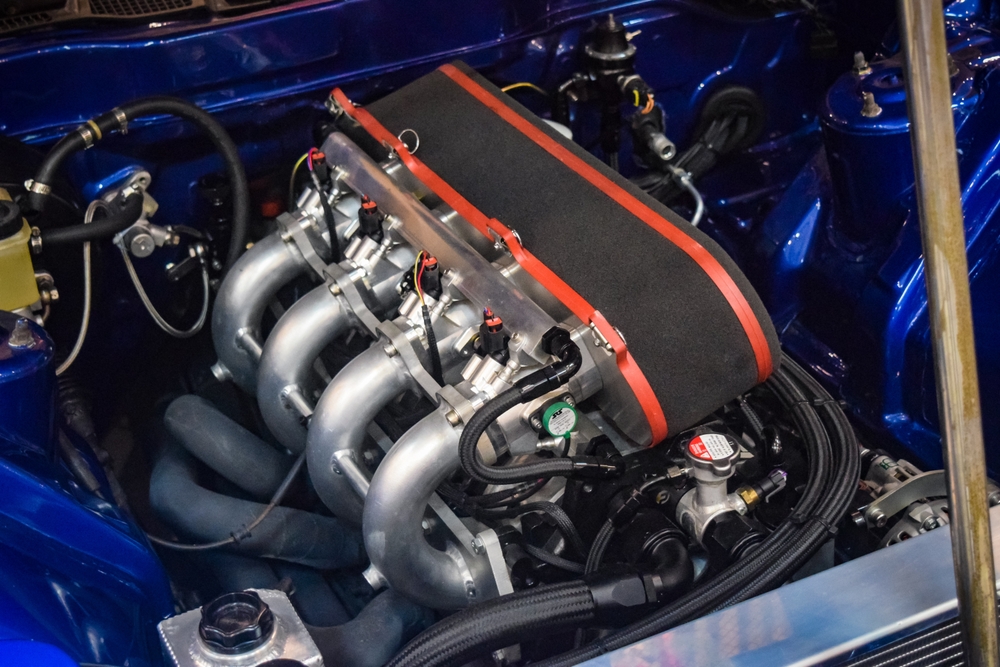Twincharging: The Best of Both Worlds in Engine Forced Induction
A roar echoes through the valley as a compact hatchback surges forward, its engine punching well above its weight class. This isn't your average econobox – it's a twincharged marvel, combining the best of turbocharging and supercharging to deliver jaw-dropping performance. But what exactly is twincharging, and why is it capturing the attention of performance enthusiasts and engineers alike?

The Genesis of Twincharging
The concept of twincharging isn’t entirely new. In fact, its roots can be traced back to the 1980s when Lancia introduced the Delta S4 rally car. This groundbreaking vehicle utilized both a supercharger and a turbocharger to dominate the Group B rally scene. However, the complexity and cost of early twincharging systems limited their widespread adoption in production vehicles.
Fast forward to the 21st century, and advances in engine management systems, materials science, and manufacturing techniques have breathed new life into the twincharging concept. Modern twincharged engines are more reliable, efficient, and capable than ever before, leading to a resurgence of interest from automakers and aftermarket tuners alike.
How Twincharging Works
At its core, twincharging combines the immediate boost of a supercharger with the efficiency of a turbocharger. The supercharger, typically driven by the engine’s crankshaft via a belt or chain, provides instant boost at low RPMs. This eliminates the dreaded turbo lag often associated with turbocharged engines, ensuring crisp throttle response and robust low-end torque.
As engine speed increases, the exhaust-driven turbocharger spools up and takes over the primary forced induction duties. The transition between supercharger and turbocharger operation is managed by sophisticated engine control units, often utilizing variable geometry turbos and bypass valves to ensure seamless power delivery across the entire rev range.
Advantages of Twincharging
The benefits of twincharging are numerous and compelling. First and foremost is the elimination of turbo lag. By using a supercharger to provide initial boost, twincharged engines deliver instant throttle response reminiscent of naturally aspirated engines, but with significantly more power.
Twincharging also allows for impressive power density. Smaller displacement engines can produce power outputs rivaling much larger naturally aspirated powerplants, all while maintaining better fuel efficiency and lower emissions. This downsizing potential is particularly attractive to automakers facing increasingly stringent emissions regulations.
Moreover, twincharged engines often boast remarkably flat torque curves. The combination of supercharger and turbocharger ensures ample torque is available throughout the rev range, enhancing drivability and performance in real-world conditions.
Challenges and Engineering Solutions
Despite its advantages, twincharging presents several engineering challenges. The added complexity of integrating two forced induction systems increases both cost and potential points of failure. Engineers must carefully manage heat generation and dissipation, as both superchargers and turbochargers produce significant heat during operation.
To address these challenges, automakers have developed innovative solutions. Advanced materials like titanium and ceramic coatings are employed to withstand the high temperatures and stresses involved. Sophisticated cooling systems, often incorporating air-to-water intercoolers, help manage heat more effectively than traditional air-to-air setups.
Engine management systems have also evolved to handle the complexities of twincharging. Modern ECUs can precisely control boost pressure, fuel injection, and ignition timing to optimize performance and efficiency across all operating conditions. Some systems even incorporate predictive algorithms to anticipate driver inputs and preemptively adjust boost levels.
Twincharging in Production Vehicles
While still relatively rare, twincharging has found its way into several production vehicles in recent years. Volkswagen Group has been at the forefront of this technology, implementing twincharging in various models across its brands. The 1.4-liter TSI engine, found in vehicles like the Volkswagen Golf and Audi A1, showcases the potential of twincharging in compact, efficient packages.
Other automakers have also experimented with twincharging, albeit in limited production runs or concept vehicles. Volvo’s T6 engine, which powered certain models of the S80 sedan and XC90 SUV, utilized a twincharging system to extract impressive performance from a relatively small displacement engine.
The Future of Twincharging
As the automotive industry continues to push for greater efficiency and performance, twincharging is poised to play an increasingly important role. The technology’s ability to deliver strong performance from small displacement engines aligns well with the industry’s downsizing trends and emissions reduction goals.
Furthermore, the advent of 48-volt mild hybrid systems opens up new possibilities for twincharging. Electric superchargers, which can provide instant boost without draining engine power, could revolutionize twincharging setups. These e-superchargers could work in tandem with traditional turbochargers to create even more responsive and efficient forced induction systems.
Twincharging in Motorsports
The world of motorsports has always been a proving ground for cutting-edge automotive technologies, and twincharging is no exception. While regulations in many racing series currently prohibit the use of multiple forced induction systems, some niche categories are embracing twincharging’s potential.
Time attack racing, where vehicles compete for the fastest lap time rather than wheel-to-wheel competition, has seen several successful twincharged entries. These purpose-built machines showcase the extreme performance potential of well-executed twincharging systems, often producing power outputs that dwarf their engine displacement.
As twincharging technology continues to mature and prove its reliability, it’s possible we may see it adopted in more mainstream motorsports categories. The combination of instant throttle response and high-end power could prove particularly advantageous in disciplines like rallying or endurance racing.
In conclusion, twincharging represents a fascinating evolution in forced induction technology. By combining the strengths of supercharging and turbocharging, engineers have created a system that offers the best of both worlds: instant response, broad power bands, and impressive efficiency. As the automotive industry continues to evolve, twincharging may well play a crucial role in shaping the high-performance engines of tomorrow, delivering exhilarating performance while meeting increasingly stringent emissions standards.





